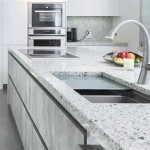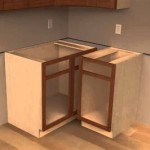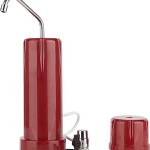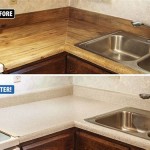White and Gray Quartzite Countertops: A Comprehensive Overview
Quartzite countertops, particularly those featuring white and gray hues, have gained significant popularity in recent years among homeowners and designers alike. This natural stone offers a compelling combination of aesthetic appeal, durability, and relatively low maintenance, making it a sought-after material for kitchen and bathroom surfaces. Understanding the properties, variations, and care requirements of white and gray quartzite is essential for making informed decisions regarding its integration into interior design projects.
Quartzite is a metamorphic rock formed from sandstone under intense heat and pressure. This process results in a highly durable and visually striking material composed primarily of quartz crystals. The presence of other minerals during formation contributes to the diverse range of colors and patterns observed in quartzite slabs, including the desirable white and gray variations.
White and gray quartzite countertops offer a sophisticated and versatile aesthetic that complements a wide range of design styles. The neutral color palette provides a clean and modern look while also allowing for flexibility in coordinating with other design elements, such as cabinetry, flooring, and backsplash materials. The natural variations in veining and patterns within each slab ensure that every countertop is unique, adding a touch of individuality to the space.
Aesthetic Versatility and Design Integration
One of the primary advantages of white and gray quartzite is its aesthetic versatility. These neutral tones serve as a blank canvas, allowing designers to incorporate the countertops into various design schemes, from minimalist modern to traditional farmhouse styles. White quartzite, such as the popular Macaubas White, creates a bright and airy feel, enhancing the perceived size and openness of a room. Gray quartzite, such as Silver Fantasy, offers a more subdued and sophisticated look, adding depth and character to the space. The subtle variations in veining and patterns within each slab further contribute to the visual interest, preventing the countertops from appearing monotonous.
The neutral color palette of white and gray quartzite also simplifies the process of coordinating with other design elements. These countertops pair well with a wide range of cabinet colors, from classic white and gray to bolder hues such as navy blue or forest green. They also complement various flooring options, including hardwood, tile, and natural stone. The versatility of white and gray quartzite extends to backsplash materials as well, allowing for the use of glass, ceramic, or natural stone tiles in a variety of colors and patterns. This flexibility enables designers to create cohesive and visually appealing spaces that reflect the homeowner's personal style.
Furthermore, the natural beauty of quartzite enhances the overall aesthetic appeal of the space. The crystalline structure of the stone creates a subtle shimmer that catches the light, adding a touch of elegance and sophistication. The natural variations in veining and patterns, ranging from delicate swirls to bold striations, provide visual interest and depth. These unique characteristics ensure that each countertop is a one-of-a-kind work of art, adding a touch of individuality to the home.
Durability and Performance Characteristics
Beyond its aesthetic appeal, quartzite is highly regarded for its exceptional durability and performance characteristics. As a metamorphic rock formed under intense heat and pressure, quartzite is inherently strong and resistant to scratches, chips, and stains. This makes it an ideal material for kitchen countertops, where surfaces are subjected to frequent use and potential spills.
Quartzite is significantly harder than granite, another popular countertop material. This hardness translates to superior scratch resistance, making it less prone to damage from knives, pots, and other kitchen utensils. While it is always recommended to use cutting boards to protect countertops, the inherent hardness of quartzite provides an added layer of protection against accidental scratches. Similarly, quartzite is highly resistant to chipping, which can occur from impact with heavy objects. This durability ensures that the countertops maintain their pristine appearance for years to come.
In addition to its scratch and chip resistance, quartzite is also relatively resistant to staining. However, it is important to note that quartzite is a porous material, meaning that it can absorb liquids if left unsealed. To prevent staining, it is recommended to seal quartzite countertops with a high-quality sealant. The sealant creates a protective barrier that prevents liquids from penetrating the stone, making it easier to clean up spills and stains. Regular sealing, typically once or twice a year, is essential for maintaining the stain resistance of quartzite countertops.
Furthermore, quartzite is heat resistant, making it suitable for use near stoves and other heat sources. While it is always recommended to use trivets or hot pads to protect countertops from prolonged exposure to high heat, quartzite can withstand the occasional placement of hot pots and pans without sustaining damage. This heat resistance adds to the practicality and versatility of quartzite countertops in the kitchen.
Care and Maintenance Requirements
While quartzite is a durable and low-maintenance material, proper care and maintenance are essential for preserving its beauty and longevity. Regular cleaning, sealing, and the avoidance of harsh chemicals are key to ensuring that the countertops remain in pristine condition for years to come.
For daily cleaning, a mild soap and water solution is sufficient for removing dirt, crumbs, and spills. It is important to use a non-abrasive cleaner to avoid scratching the surface of the quartzite. A soft cloth or sponge should be used to wipe down the countertops, and any spills should be cleaned up immediately to prevent staining. Avoid using harsh chemicals, such as bleach, ammonia, or acidic cleaners, as these can damage the sealant and etch the surface of the stone.
As mentioned earlier, sealing is crucial for maintaining the stain resistance of quartzite countertops. The frequency of sealing depends on the type of sealant used and the level of use the countertops receive. Generally, it is recommended to seal quartzite countertops once or twice a year with a high-quality sealant designed specifically for natural stone. The sealant creates a protective barrier that prevents liquids from penetrating the stone, making it easier to clean up spills and stains. To determine if resealing is necessary, perform a simple water test. Pour a small amount of water onto the countertop and let it sit for a few minutes. If the water beads up, the countertop is adequately sealed. If the water soaks into the stone, it is time to reseal.
In addition to regular cleaning and sealing, it is important to take precautions to protect quartzite countertops from scratches and chips. Use cutting boards when preparing food to prevent scratches from knives and other utensils. Avoid placing heavy objects directly on the countertops to minimize the risk of chipping. Use trivets or hot pads under hot pots and pans to protect the surface from heat damage. By following these simple guidelines, homeowners can ensure that their white and gray quartzite countertops remain beautiful and functional for many years.
Overall, white and gray quartzite countertops offer a compelling combination of aesthetic appeal, durability, and relatively low maintenance. Their neutral color palette complements a wide range of design styles, while their inherent strength and resistance to scratches, chips, and stains make them ideal for high-traffic areas such as kitchens and bathrooms. With proper care and maintenance, these countertops can provide years of beauty and functionality, enhancing the overall value and appeal of the home.
The market offers many varieties of white and gray quartzite, each with unique veining and patterns. Some popular choices include: Calacatta Macaubas, a white quartzite with dramatic gray veining, resembling Calacatta marble; Taj Mahal, a creamy white quartzite with subtle gold and gray veining; and Sea Pearl, a gray quartzite with swirling patterns of white and beige. Choosing the right variety depends on the desired aesthetic and the overall design scheme of the space.

White And Gray Quartzite Countertops Design Ideas

More About Quartzite Countertops Legacy Insights Marble Granite

White Gray Quartzite Veining Midwest Marble Quartz And Granite

Gray Quartzite Perimeter Countertops Design Ideas

White Macaubas Quartzite Countertops In Virginia Md Dc Exclusive

Super White Countertops Are They Granite Marble Or Quartzite

From Subtle To Bold Quartzite Countertop Colors That Wow Marble Systems Supplier Travertine Granite Tile

Hottest Kitchen Design Trends That Pair Perfectly With Quartzite Countertops Aa Marble Granite Custom

Stonemark 3 In X Quartzite Countertop Sample Mercury Dt Q103 The Home

White Quartzite Countertops Tips And Design Ideas Eagle Stones Granite Marble
See Also








